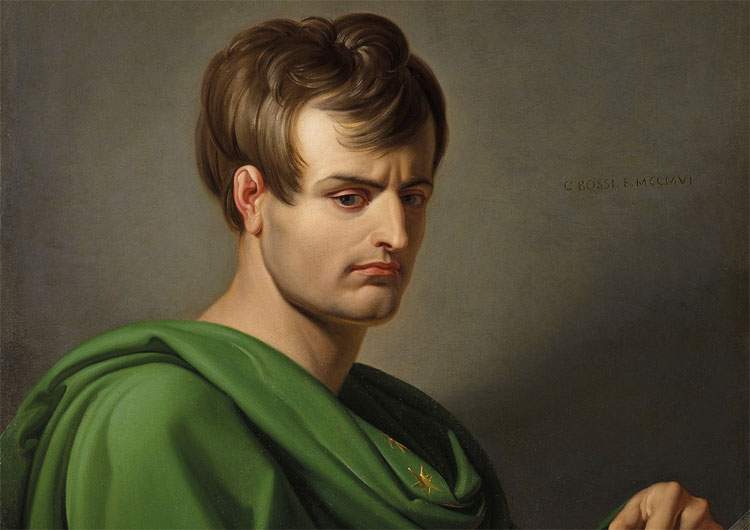To mark the bicentenary of Napoleon’s death, the Carlo Orsi Gallery in Milan is hosting the exhibition Napoleon and Milan. Between Reality and Myth - The Image of Napoleon from Liberator to Emperor, a set of works celebrating the figure of the French general and his connection with the city of Milan.
On May 15, 1796, the French army commanded by General Napoleon Bonaparte entered Milan. Amid alternating fortunes (with the Austrian interregnum of 1799-1800) the Corsican general will shapeÌ€ the fate of the city until 1814, the date of his abdication. In the span of just two decades Napoleon influenced Milan with an intensityÌ€ and fervor never seen before. Arriving as a liberator in 1796, laden with the ideals of the Revolution, he later became emperor, disappointing with this turn of events the many who had seen him as the promoter of the spread of republican principles in Lombardy but also consolidating-through his power-the city’s good governance, structures, and administration.
Art and the construction of his self-image were central aspects of his presence in Milan, during which relevance and attention to painting, architecture, and town planning were a constant feature.
It can be said that Milan is the city of the Empire where Napoleon’s influence was greatest, and where his memory can still be felt.
Napoleon had a genuine passion for art and held the arts and artists in high regard, which played a central role in building his myth. Thanks to him, the Pinacoteca di Brera became the national museum that collected the works selected by a special commission and has remained over the years closely linked to Bonaparte, as can be seen from the vast rooms dedicated to him and the famous bronze statue by Canova depicting the general as Mars the Peacemaker placed in the main courtyard.
Evidence of Napoleon’s sincere passion for art is the meeting that took place in the aftermath of his entry into Milan with two very talented painters, Antoine-Jean Gros and Andrea Appiani; the latter was the greatest figurative interpreter of the Napoleonic age in Italy and the emperor’s official portraitist. And it is from the figure of the great artist Appiani that Galleria Carlo Orsi has selected 14 works from private collections to celebrate this important anniversary of May 5, the bicentennial of Napoleon’s death. Presented within the exhibition is Appiani’s Portrait of Alessandro Trivulzio Minister of War (1802 - 1804). The officialdom of the pose of the noble general holding a sword with his hands is belied by the character’s fine introspection and the exciting landscape in the background rendered through atmospheric vibrations.
Among the artists on display is Giuseppe Bossi, Appiani’s rival, with his Portrait of Napoleon Bonaparte (1805). The artist had ventured into Napoleonic iconography by depicting Bonaparte as a deity or ancient ruler dressed in purple in the famous painting with which he won the Recognition Competition in 1802. The work is now at theBrera Academy of Fine Arts.
Completing the section devoted to portraits of the “uom fatale” are another work by Giuseppe Bossi Portrait of Napoleon Leaning on the Globe (pictured), the marvelous Bust of Napoleon made in marble by Lorenzo Bartolini, and the Equestrian Statuette of Napoleon Bonaparte by Giacomo Raffaelli. The exhibition continues with a section of works depicting Napoleon’s officials and court including Giambattista Gigola ’s series of miniatures on ivory, and places and views of the time.
Closing the exhibition’s itinerary-and testifying to the persistence of the Napoleonic myth in the decades following his death-is Francesco Hayez ’s work Napoleon Distributes Decorations after the Battle of Wagram. Painted commissioned in 1831 by Count Carlo Cicogna, baron of the Italic Kingdom and aide-de-camp to Viceroy Eugene de Beauharnais, who had been awarded the Legion of Honor at only 25 years of age for valor shown in battle.
The exhibition is open from May 28 to June 25.
For all information you can visit the official website of the Carlo Orsi Gallery.
 |
| Milan, an exhibition investigates the relationship between the city and Napoleon Bonaparte |
Warning: the translation into English of the original Italian article was created using automatic tools. We undertake to review all articles, but we do not guarantee the total absence of inaccuracies in the translation due to the program. You can find the original by clicking on the ITA button. If you find any mistake,please contact us.